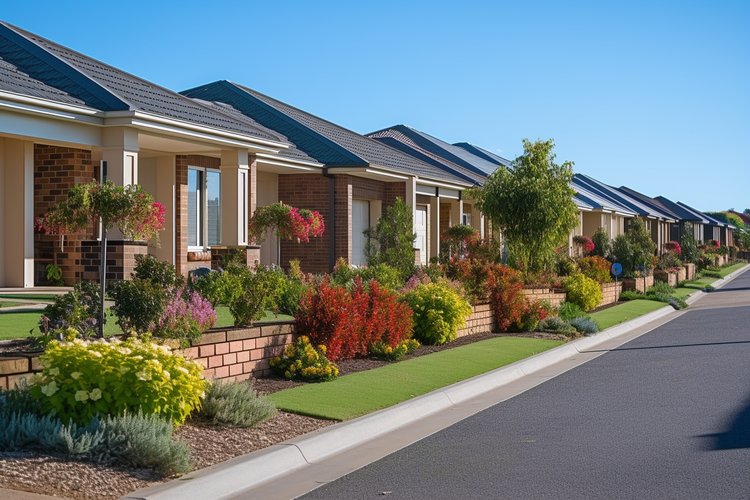Are Retirement Villages in Australia Affordable in 2025?
Entry fees for retirement village units in Australia in 2025 typically start from around $100,000 and can reach up to $1 million. This article explains the different fees, contract details, and living options to help you better understand the costs and make informed decisions about retirement village living.

Retirement Village Prices Compared to General Housing Costs
Retirement village pricing structures differ significantly from traditional real estate purchases. While the median house price in Australia’s capital cities ranges between $550,000 and $1.2 million in 2025, retirement village units typically appear more affordable at first glance, with entry prices ranging from $300,000 to $800,000 depending on location and amenities. However, this comparison isn’t straightforward because retirement village purchases generally operate under different ownership models.
Most retirement villages use either a loan-license arrangement or leasehold model rather than freehold ownership. This means residents purchase the right to occupy the dwelling but don’t own the property outright as they would with a traditional home. While initial costs may seem lower, the full financial picture must include ongoing fees and exit costs that don’t apply to standard property ownership.
Fee Structure Overview: Entry, Ongoing and Exit Fees
The retirement village cost structure typically consists of three main components: entry fees, ongoing fees, and exit fees.
Entry fees (also called ingoing contributions) are the upfront payment to secure a unit, ranging from $300,000 for modest accommodations in regional areas to over $1 million for luxury units in prime metropolitan locations. These fees generally reflect market values but at a discount to comparable residential housing in the same area.
Ongoing fees cover day-to-day village operations and typically range from $400 to $1,200 monthly. These fees may include building maintenance, staff costs, common area upkeep, some utilities, and basic services. Unlike strata fees in regular apartments, these charges often include additional services specific to retirement living.
Exit fees (also called deferred management fees or DMFs) are unique to retirement villages and often cause the most confusion. These fees usually accumulate over time—typically between 25-40% of the entry price after 10 years of residency. While seemingly high, they effectively represent deferred payment for services and facilities provided during residency.
Additional Expenses to Keep in Mind
Beyond the core fee structure, prospective retirement village residents should budget for several additional expenses. Utilities not covered by ongoing fees, including electricity, internet, and personal phone service, remain the resident’s responsibility. Home contents insurance is another necessary expense, though building insurance is typically covered by the village.
Personal services such as meal delivery, laundry assistance, and transportation may be available but usually incur extra charges. Health-related services like in-home care, allied health visits, or medication management are generally not included in standard village fees and must be arranged and funded separately, often through government programs like Home Care Packages.
Home modifications for accessibility or comfort are another potential expense. While units are designed with aging in mind, specific adaptations may need to be negotiated with village management and paid for by residents. Finally, refurbishment costs upon exit can be substantial, with many contracts requiring departing residents to restore their unit to its original condition or contribute to renovation expenses.
Differences Across States and Locations
Retirement village affordability varies considerably across Australia’s states and territories, reflecting broader property market trends. In 2025, New South Wales and Victoria continue to host the most expensive retirement villages, particularly in Sydney and Melbourne, where entry fees for well-located villages regularly exceed $700,000.
Queensland offers more moderate pricing, with entry contributions typically ranging from $350,000 to $600,000, while Western Australia and South Australia generally provide more affordable options starting around $300,000. Tasmania, the Northern Territory, and regional locations across all states typically offer the lowest entry points, sometimes below $300,000.
Location specifically impacts ongoing fees as well. Metropolitan villages generally charge higher monthly fees reflecting increased operational costs, while rural and regional villages may offer more competitive rates but potentially fewer amenities or services.
| State/Territory | Typical Entry Fee Range (2025) | Average Monthly Ongoing Fees | Typical Maximum Exit Fee (after 10 years) |
|---|---|---|---|
| NSW (Sydney) | $550,000 - $1,200,000 | $800 - $1,200 | 30-38% |
| VIC (Melbourne) | $500,000 - $1,000,000 | $700 - $1,100 | 30-35% |
| QLD (Brisbane) | $350,000 - $700,000 | $600 - $950 | 25-35% |
| WA (Perth) | $300,000 - $650,000 | $550 - $900 | 25-33% |
| SA (Adelaide) | $300,000 - $600,000 | $550 - $850 | 25-30% |
| TAS (Hobart) | $280,000 - $550,000 | $500 - $800 | 25-30% |
| Regional Areas | $250,000 - $500,000 | $450 - $750 | 25-35% |
Prices, rates, or cost estimates mentioned in this article are based on the latest available information but may change over time. Independent research is advised before making financial decisions.
Finding Detailed Pricing and Location-Specific Information
Prospective retirement village residents should conduct thorough research to find accurate, location-specific pricing information. Village operators are legally required to provide disclosure documents detailing all costs involved, including projected fee increases and exit fee calculations. These documents, while comprehensive, can be complex, and seeking independent financial and legal advice is recommended before signing any contract.
Industry associations like the Retirement Living Council maintain databases of villages with general pricing information. State and territory consumer protection agencies also provide resources specific to retirement village regulations in their jurisdictions, which can help identify what questions to ask when investigating options.
Many operators offer calculation tools on their websites that estimate total costs over different timeframes, accounting for entry fees, ongoing charges, and exit fees. These tools help potential residents understand the long-term financial commitment more clearly than looking at entry costs alone.
When comparing villages, requesting a detailed breakdown of what ongoing fees cover is essential, as the scope of included services varies significantly between providers. Additionally, understanding how exit fees are calculated and what refurbishment costs might apply will prevent unexpected expenses later.
Retirement villages can offer a supportive community environment with purpose-built housing for older Australians, but affordability depends on individual financial circumstances, location preferences, and service needs. While entry prices may appear competitive compared to general housing costs, the complete fee structure—including ongoing and exit fees—must be carefully considered when evaluating overall affordability.




